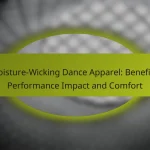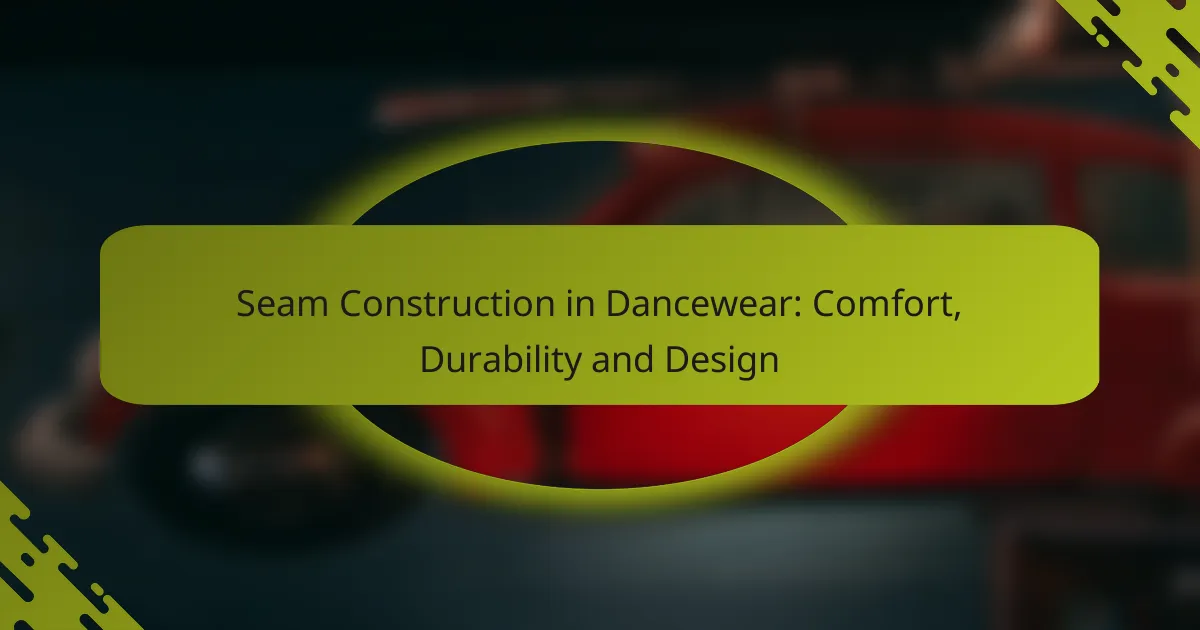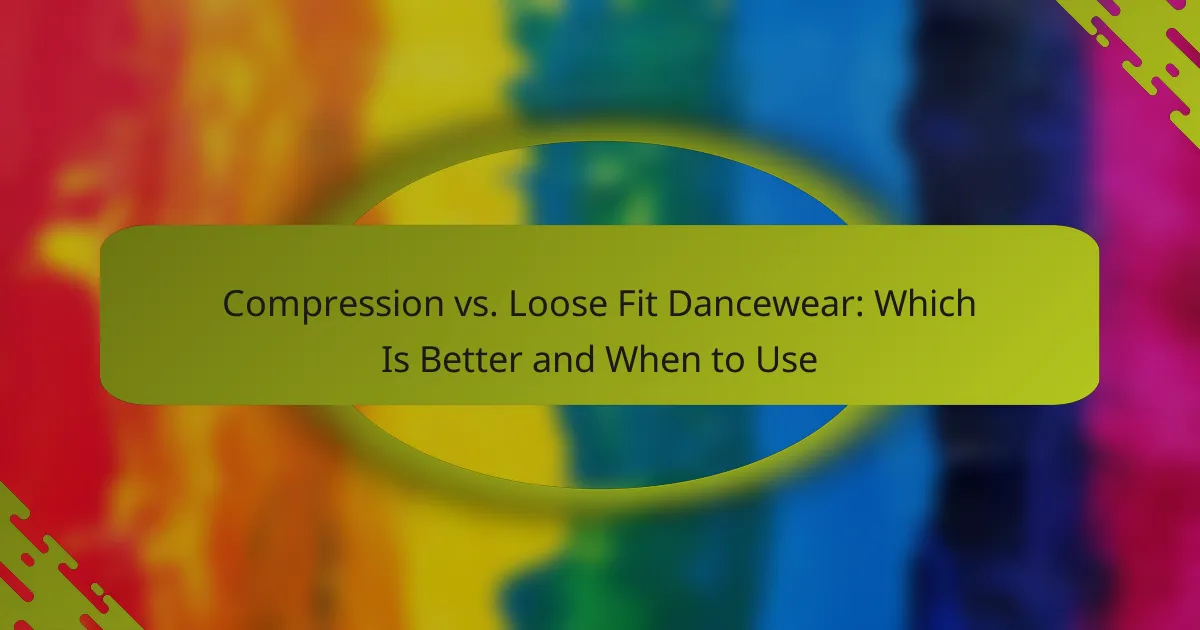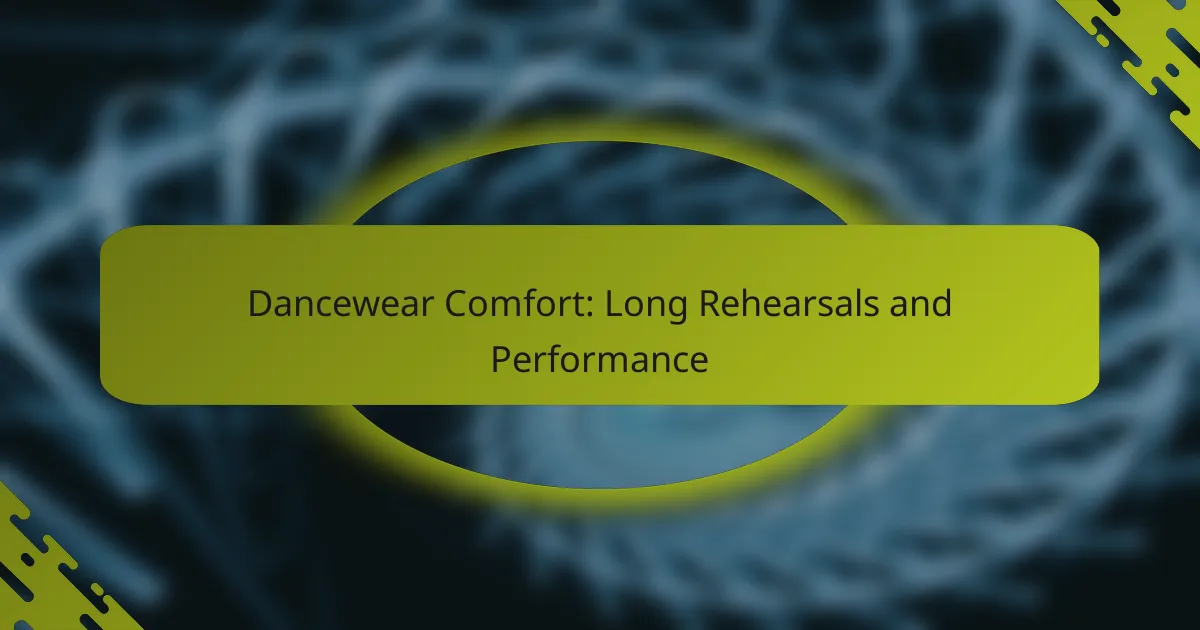Seam construction is essential in dancewear, significantly affecting comfort and performance during movement. Well-designed seams not only reduce irritation but also enhance flexibility and support a dancer’s range of motion. Utilizing durable materials like polyester blends, nylon, and spandex further ensures longevity and comfort, making these fabrics ideal for the rigors of dance. Renowned brands such as Bloch, Capezio, and Gaynor Minden excel in creating dancewear that combines these critical elements of design.

How does seam construction affect comfort in dancewear?
Seam construction plays a critical role in the comfort of dancewear by influencing how the fabric interacts with the body during movement. Properly designed seams can minimize irritation, enhance flexibility, and support a dancer’s range of motion.
Flatlock seams for reduced chafing
Flatlock seams are specifically designed to lie flat against the skin, which helps to reduce chafing during intense movement. This type of seam is often used in high-performance dancewear, as it prevents the fabric from bunching and irritating sensitive areas.
When selecting dancewear, look for garments that feature flatlock seams, especially in areas prone to friction, such as underarms and inner thighs. This construction method can significantly enhance comfort during long rehearsals or performances.
Seam placement for optimal movement
The placement of seams in dancewear is crucial for allowing freedom of movement. Strategically positioned seams can enhance the garment’s fit and support the dancer’s natural body movements, reducing restrictions during various dance styles.
For example, seams that follow the body’s contours can help maintain a streamlined silhouette while allowing for dynamic movements. Dancers should consider trying on garments to ensure that the seam placement aligns with their movement patterns.
Stretchable seams for flexibility
Stretchable seams are designed to accommodate the dynamic movements of dance, providing both comfort and flexibility. These seams often incorporate elastic threads or specialized stitching techniques that allow the fabric to stretch without compromising its integrity.
When choosing dancewear, look for items with seams that offer a good range of motion, particularly in areas like the back and legs. This flexibility is essential for executing complex choreography and maintaining comfort throughout performances.
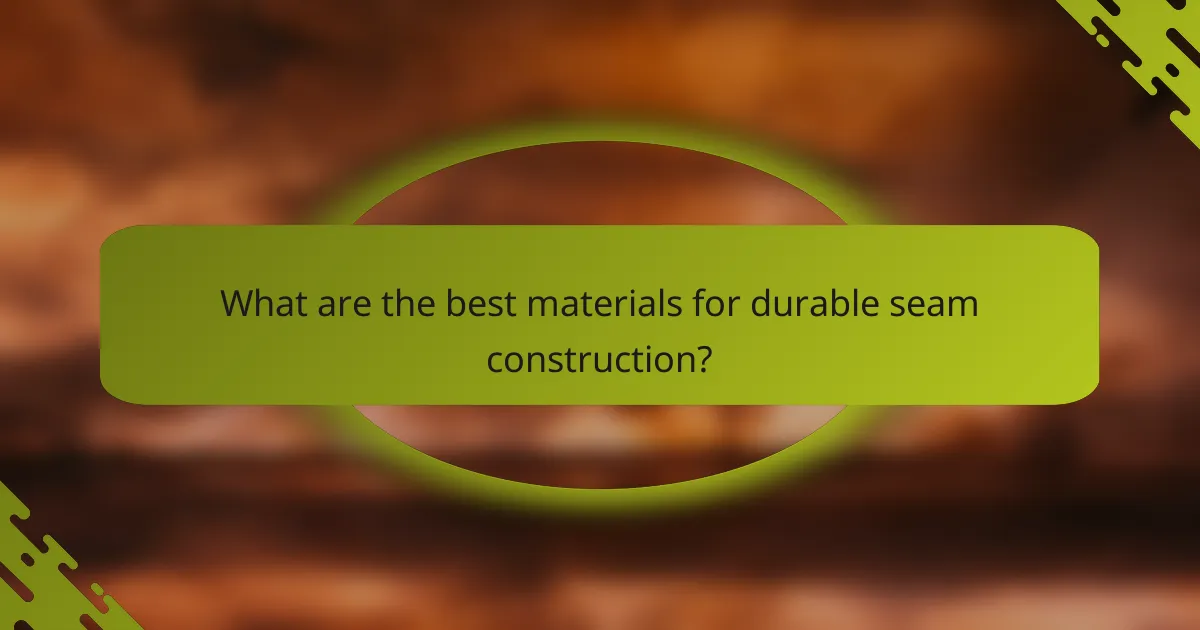
What are the best materials for durable seam construction?
The best materials for durable seam construction in dancewear include polyester blends, nylon, and spandex. Each of these materials offers unique properties that enhance comfort, longevity, and flexibility, making them ideal for the demands of dance performance.
Polyester blends for longevity
Polyester blends are favored for their durability and resistance to wear and tear. These fabrics can withstand frequent washing and maintain their shape over time, making them suitable for high-use dancewear. Look for blends that incorporate cotton or other fibers for added comfort against the skin.
When selecting polyester blends, consider the weight and thickness. Heavier blends may offer more durability, while lighter options can enhance breathability. A good balance between these factors ensures that the garment lasts while remaining comfortable during movement.
Nylon for abrasion resistance
Nylon is known for its exceptional abrasion resistance, making it ideal for dancewear that undergoes rigorous movements. This material is lightweight yet strong, allowing for a full range of motion without compromising on durability. It is particularly effective in areas that experience high friction, such as the inner thighs or underarms.
When choosing nylon fabrics, look for options with a higher denier count, as these tend to be more robust. Additionally, consider blends that include moisture-wicking properties to keep dancers dry and comfortable during performances.
Spandex for stretch and recovery
Spandex is essential for providing stretch and recovery in dancewear, allowing garments to move with the body. This material can stretch significantly while retaining its shape, making it perfect for form-fitting designs that require flexibility. It is often blended with other fabrics to enhance overall performance.
When incorporating spandex, aim for a blend that contains around 10-20% spandex for optimal stretch without compromising durability. This ensures that the dancewear can withstand dynamic movements while maintaining its fit and comfort over time.

Which brands offer high-quality seam construction in dancewear?
Several brands are recognized for their superior seam construction in dancewear, ensuring comfort, durability, and style. Notable names include Bloch, Capezio, and Gaynor Minden, each offering unique advantages tailored to different dancer needs.
Bloch for performance-focused designs
Bloch is renowned for its performance-oriented dancewear, featuring seams that enhance flexibility and support during movement. Their garments often incorporate flatlock stitching, which minimizes chafing and maximizes comfort, making them ideal for rigorous practice and performances.
When selecting Bloch products, consider their range of styles, from leotards to tights, all designed with the dancer’s active needs in mind. The seamless construction in certain items provides a sleek look while allowing for a full range of motion.
Capezio for classic styles
Capezio has a long-standing reputation for classic dancewear, focusing on timeless designs that prioritize durability. Their seam construction often features reinforced stitching, ensuring longevity even with frequent use.
For those looking for traditional ballet attire, Capezio offers a variety of options, including tutus and leotards, that maintain their shape and integrity over time. Pay attention to the fabric blends they use, as these can significantly affect comfort and performance.
Gaynor Minden for innovative materials
Gaynor Minden is at the forefront of using innovative materials in dancewear, which directly impacts seam construction. Their products often utilize advanced fabrics that stretch and recover, allowing for both comfort and durability.
When choosing Gaynor Minden, look for their unique seam designs that prevent wear and tear while providing a flattering fit. Their emphasis on technology means that dancers can enjoy garments that not only look good but also perform exceptionally well under pressure.

What design features enhance seam durability in dancewear?
Durable seams in dancewear are achieved through specific design features that enhance strength and longevity. Key techniques include reinforced stitching, double-stitching, and seam sealing, all of which contribute to the overall resilience of the garment during rigorous movement.
Reinforced stitching techniques
Reinforced stitching techniques involve using additional threads or specialized stitches to strengthen areas of high stress in dancewear. Techniques such as bar tacking or zigzag stitching can significantly enhance seam durability, preventing fraying and tearing. When selecting dancewear, look for garments that incorporate these methods in critical areas like armholes and crotches.
Double-stitched seams for strength
Double-stitched seams provide an extra layer of security, making them less likely to unravel under strain. This method involves sewing two parallel lines of stitching along the seam, which distributes tension more evenly. Dancewear with double-stitched seams is particularly beneficial for styles that require extensive movement, such as ballet or contemporary dance.
Seam sealing for water resistance
Seam sealing is a technique used to apply a waterproof barrier over the seams of dancewear, preventing moisture from penetrating the fabric. This is especially important for outdoor performances or rehearsals in damp conditions. Look for dancewear that features seam sealing if you often practice in variable weather, as it helps maintain comfort and performance quality.

How can dancers choose the right seam construction for their needs?
Dancers can choose the right seam construction by considering their specific dance style, fit and comfort preferences, and the climate in which they perform. Each of these factors plays a crucial role in ensuring that the dancewear supports their movements while providing durability and comfort.
Assessing dance style requirements
Different dance styles require varying levels of flexibility and support from dancewear. For instance, ballet often demands tighter-fitting garments with flat seams to reduce bulk, while hip-hop may allow for looser fits with more robust seam types. Understanding the specific needs of the dance style can guide the selection of appropriate seam construction.
Additionally, some styles may benefit from reinforced seams to withstand rigorous movements. Dancers should consider whether their routine involves a lot of stretching, turning, or jumping, which can influence the seam choice.
Evaluating fit and comfort preferences
Fit and comfort are paramount when selecting seam construction. Dancers should try on different styles to see how the seams feel during movement. Flat seams tend to be less noticeable and can prevent chafing, making them ideal for long rehearsals.
Conversely, some dancers may prefer seams that provide more structure, such as overlocked seams, which can offer additional support. It’s essential to balance comfort with the desired level of support based on personal preference.
Considering climate and performance conditions
The climate and performance conditions can significantly impact the choice of seam construction. In warmer environments, breathable fabrics with lightweight seams can enhance comfort and prevent overheating. Dancers performing in cooler climates may opt for thicker seams that provide insulation.
Moreover, outdoor performances may require more durable seam types to withstand varying weather conditions. Dancers should consider the typical temperature and humidity levels of their performance venues when selecting their dancewear.


